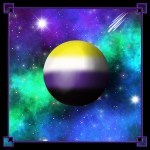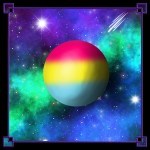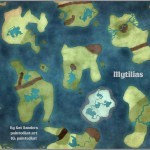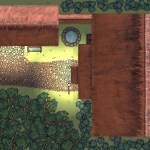Kat Sanders's Blog
March 31, 2025
Unique Junk Journaling: Turn Trash into Treasure for Your Journal
Junk journaling is a creative and eco-friendly way to document memories, thoughts, and ideas. Unlike traditional journaling, junk journals embrace imperfection and incorporate everyday items that might otherwise be discarded. By upcycling household items, you can create a unique, personalized journal that tells your story while reducing waste. In this post, we’ll explore how to repurpose old receipts, envelopes, and other common household items into beautiful elements for your junk journal.
Repurposing Old Calendars and Planners for Creative PagesOld calendars and planners are often filled with beautiful imagery, grids, and layouts that can be repurposed into stunning pages for your junk journal. The colorful illustrations from calendar pages can serve as eye-catching backgrounds, while the grids and lines from planners are perfect for creating structured layouts or writing spaces. Instead of tossing them out, give these items a second life in your journal.
To incorporate calendar pages, simply cut out the images or sections you like and glue them onto your journal pages. You can layer them with other materials like tissue paper, fabric, or magazine cutouts for added texture. Planner pages, on the other hand, can be used as-is for jotting down notes, lists, or doodles. The pre-printed dates and grids can also add a unique, organized feel to your journal.
Old calendars and planners are not only visually appealing but also carry a sense of nostalgia. By using them in your junk journal, you’re preserving memories and creating a meaningful connection to the past. Whether you use them as backgrounds, dividers, or decorative elements, these repurposed pages add depth and personality to your journal.
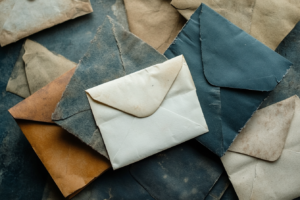
Envelopes are a junk journaler’s best friend. They can be easily transformed into functional pockets for storing loose items like photos, tickets, or handwritten notes. Simply glue the sides of an envelope onto your journal page, leaving the top open to create a pocket. You can also cut envelopes into smaller sizes or shapes to fit your design.
For a more decorative approach, consider painting or collaging over the envelopes to match your journal’s theme. You can also use patterned envelopes or ones with interesting postmarks to add character. Envelopes with windows can be particularly fun, as they allow you to peek at the contents inside, adding an interactive element to your journal.
Envelopes are not just practical—they also add dimension and intrigue to your pages. By upcycling them, you’re giving new life to something that would otherwise be thrown away, while also creating a functional and beautiful feature in your journal.

Magazines and catalogs are treasure troves of colorful images, patterns, and text that can be used to create stunning collages in your junk journal. Cut out images, words, or phrases that resonate with you and arrange them on your journal pages. This is a great way to express your personality and interests while repurposing materials that would otherwise end up in the recycling bin.
To make your collages more cohesive, consider sticking to a specific color scheme or theme. You can also layer magazine cutouts with other materials like fabric, lace, or tissue paper for added texture. Don’t be afraid to experiment with different layouts and compositions—junk journaling is all about creativity and self-expression.
Collages are not only visually appealing but also a great way to document your thoughts and inspirations. By using old magazines and catalogs, you’re reducing waste and creating a unique visual narrative in your journal.
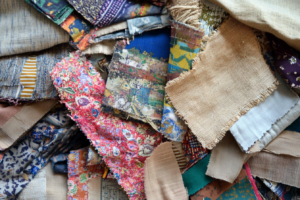
Fabric scraps are another fantastic material for junk journaling. They can be used to create soft, textured pages, embellishments, or even covers for your journal. Old clothing, linens, or leftover fabric from sewing projects can all be repurposed into beautiful journal elements.
To use fabric in your journal, consider cutting it into shapes like hearts, flowers, or tags. You can also use it to create pockets, tuck spots, or page reinforcements. Fabric can be glued directly onto your pages or sewn onto them for a more durable finish. Adding fabric to your journal not only enhances its visual appeal but also makes it more tactile and engaging.
Fabric scraps also allow you to incorporate patterns and colors that might not be available in paper form. Whether you use them as backgrounds, borders, or accents, fabric adds a unique and personal touch to your junk journal.

Packaging materials like cardboard, tissue paper, and bubble wrap often get discarded, but they can be transformed into unique embellishments for your junk journal. Cardboard can be cut into shapes or used to create sturdy journal covers, while tissue paper can be crumpled or layered for a delicate, textured effect.
Bubble wrap, on the other hand, can be used to create interesting patterns and textures. Simply paint over the bubble wrap and press it onto your journal pages for a fun, bubbly design. You can also use it to add dimension to your pages by gluing small pieces underneath other materials.
By repurposing packaging materials, you’re not only reducing waste but also adding creative and unexpected elements to your journal. These materials are often free and readily available, making them an excellent choice for budget-friendly junk journaling.
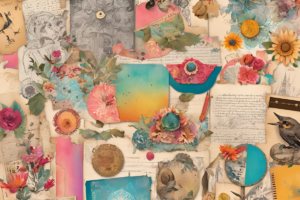
Junk journaling is a wonderful way to combine creativity and sustainability. By upcycling household items like receipts, envelopes, magazines, fabric scraps, and packaging materials, you can create a one-of-a-kind journal that reflects your personality and values. Not only does this practice help reduce waste, but it also encourages you to see the potential in everyday objects. So, the next time you’re about to throw something away, ask yourself: “Could this be treasure for my junk journal?”
Have you tried junk journaling as a form of self-care? For more about junk journaling, check out this blog post.
The post Unique Junk Journaling: Turn Trash into Treasure for Your Journal first appeared on The Painted Kat.
February 28, 2025
Junk Journaling: Relax, Heal, and Free Your Creative Spirit
In today’s fast-paced world, finding moments of peace and creativity can feel like a luxury. But what if you could combine relaxation, self-expression, and mindfulness into one simple activity? Enter junk journaling — a unique and therapeutic form of creative journaling that’s gaining popularity as a powerful self-care tool. Unlike traditional journaling, junk journaling embraces imperfection, using everyday materials like old magazines, receipts, fabric scraps, and more to create a personalized, tactile experience. Let’s dive deeper into how junk journaling can help you relax, unwind, and reconnect with yourself.
 1. Embrace Imperfection and Let Go of Pressure
1. Embrace Imperfection and Let Go of Pressure One of the most beautiful aspects of junk journaling is that there are no rules. Unlike structured journaling or art projects, junk journaling celebrates imperfection. You don’t need to be an artist or a writer to get started—just gather materials and let your creativity flow. This freedom from perfectionism can be incredibly liberating, helping you release stress and enjoy the process without worrying about the outcome.
In a world that often demands perfection, junk journaling offers a safe space to make mistakes and learn from them. A crooked cut, a smudged glue stain, or a mismatched color scheme can become part of the charm of your journal. This mindset shift can extend beyond journaling, teaching you to embrace imperfections in other areas of your life. By letting go of the need to be perfect, you can reduce anxiety and cultivate a sense of self-compassion.
Moreover, the unstructured nature of junk journaling allows you to work at your own pace. Whether you spend five minutes or an hour on your journal, every moment is an opportunity to relax and recharge. This flexibility makes it an ideal self-care activity for busy individuals who need a creative outlet that fits into their schedule.
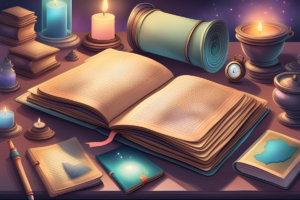
In a world dominated by screens, junk journaling offers a much-needed break. The tactile nature of cutting, gluing, and arranging materials engages your senses and keeps you grounded in the present moment. This hands-on activity can serve as a form of mindfulness, helping you disconnect from digital distractions and focus on the simple joy of creating something with your hands.
When you’re working on a junk journal, you’re fully immersed in the process. The act of selecting materials, deciding on layouts, and assembling pages requires your full attention, which can help quiet a busy mind. This meditative quality makes junk journaling an excellent way to practice mindfulness without the need for formal meditation techniques.
Additionally, the physicality of junk journaling can be incredibly soothing. The feel of paper, the sound of scissors cutting, and the smell of glue or ink can create a sensory experience that grounds you in the here and now. This sensory engagement can help reduce stress and promote a sense of calm, making junk journaling a perfect activity for winding down after a long day.
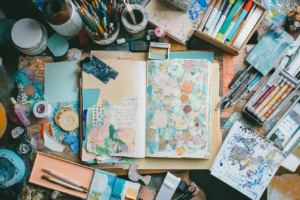
Not everyone finds it easy to express their emotions through writing. Junk journaling provides an alternative outlet for self-expression. By combining colors, textures, and imagery, you can convey your feelings and experiences in a visual, symbolic way. This can be especially therapeutic for those who struggle to articulate their thoughts or emotions verbally.
For example, if you’re feeling overwhelmed, you might create a chaotic page with overlapping layers and bold, contrasting colors. On the other hand, if you’re feeling peaceful, you might opt for soft pastels and delicate patterns. This visual representation of your emotions can help you process and understand them better, providing a sense of clarity and relief.
Junk journaling also allows you to explore your identity and values through creative expression. By choosing materials and themes that resonate with you, you can create a journal that reflects your unique personality and experiences. This process of self-discovery can be deeply empowering, helping you build a stronger connection with yourself.

Junk journaling often involves repurposing items like old photos, ticket stubs, fabric scraps, or even packaging materials. Incorporating these meaningful objects into your journal can help you reconnect with cherished memories and reflect on your journey. This process of reminiscing can be deeply comforting and affirming, reminding you of the beauty in everyday moments.
For instance, a page featuring a concert ticket stub and a playlist from that night can transport you back to a joyful experience. Similarly, a page adorned with fabric from an old piece of clothing can evoke memories of a special time or place. These tangible connections to the past can provide a sense of continuity and grounding, especially during times of change or uncertainty.
Repurposing materials also adds an eco-friendly dimension to junk journaling. By giving new life to items that might otherwise be discarded, you can feel good about reducing waste while creating something beautiful. This sense of purpose and sustainability can enhance the overall satisfaction and meaning of your journaling practice.
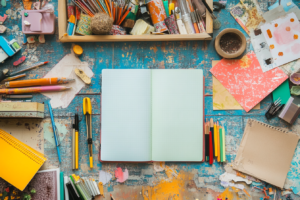
Engaging in a creative activity like junk journaling can spark new ideas and inspire you to think outside the box. As you experiment with different materials and layouts, you’ll likely discover new techniques and styles that resonate with you. Over time, this creative exploration can build your confidence, not just in journaling but in other areas of your life as well.
The process of creating something from scratch can be incredibly empowering. Each page you complete is a testament to your creativity and resourcefulness, which can boost your self-esteem and sense of accomplishment. This confidence can spill over into other aspects of your life, encouraging you to take on new challenges and pursue your passions.
Moreover, junk journaling can help you develop problem-solving skills and adaptability. When you’re working with limited materials or unexpected challenges, you learn to think creatively and find solutions. This mindset can be invaluable in navigating the ups and downs of daily life, making junk journaling not just a self-care activity but also a life skill.

Ready to give junk journaling a try? Here’s how to begin:
Gather Materials: Look for items like old books, magazines, scrap paper, fabric, stickers, and ephemera (e.g., receipts, postcards, or packaging).Choose a Base: Use an old notebook, a binder, or even handmade pages as your journal’s foundation.Let Go of Expectations: Remember, there’s no right or wrong way to junk journal. Focus on the process, not the result.Set the Mood: Light a candle, play calming music, or find a cozy spot to work in.Enjoy the Journey: Allow yourself to get lost in the creative process and savor the moments of calm it brings.Junk journaling is more than just a creative hobby—it’s a form of self-care that nurtures your mind, body, and soul. By embracing imperfection, disconnecting from screens, and expressing yourself freely, you can reduce stress, boost creativity, and find joy in the simple act of creating. So, grab some scraps, glue, and a journal, and start your junk journaling journey today. Your well-being will thank you!
Have you tried junk journaling as a form of self-care? For more about junk journaling, check out this blog post.
The post Junk Journaling: Relax, Heal, and Free Your Creative Spirit first appeared on The Painted Kat.
January 31, 2025
Junk Journaling: A Powerful & Creative Way to Record Your Life
 What is Junk Journaling?
What is Junk Journaling? Junk journaling is a unique and creative form of journaling that involves using a variety of materials, often repurposed or found items, to create a personalized and eclectic journal. Unlike traditional journals that focus solely on written content, junk journals are a blend of writing, art, and craft. They can include anything from old book pages, magazine clippings, and fabric scraps to ticket stubs, postcards, and ephemera collected from daily life. The result is a one-of-a-kind keepsake that reflects the creator’s personality, memories, and creativity.
The Origins and Evolution of Junk JournalingThe concept of junk journaling has its roots in the DIY and crafting movements, where individuals sought to create something meaningful and beautiful from everyday items. It draws inspiration from various art forms, including scrapbooking, collage, and mixed media art. Over time, junk journaling has evolved into a popular hobby, with a growing community of enthusiasts sharing their creations online and in-person. The rise of social media platforms like Instagram and Pinterest has further fueled its popularity, offering endless inspiration and ideas for aspiring junk journalers.
Why Junk Journaling is Gaining PopularityJunk journaling appeals to a wide audience for several reasons. It offers a creative outlet for self-expression, allowing individuals to experiment with different materials, techniques, and styles. It also promotes mindfulness and relaxation, as the process of creating a junk journal can be therapeutic and meditative. Additionally, junk journaling is an eco-friendly and sustainable practice, as it encourages the reuse and repurposing of materials that might otherwise be discarded. In a world increasingly focused on sustainability, junk journaling provides a meaningful way to reduce waste while creating something beautiful and personal.
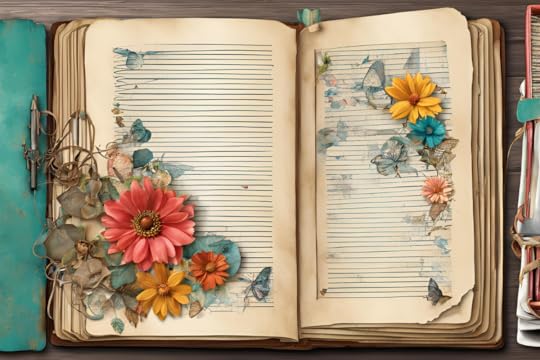 The Benefits of Junk JournalingCreative Expression and Mindfulness
The Benefits of Junk JournalingCreative Expression and Mindfulness One of the most significant benefits of junk journaling is the opportunity for creative expression. Unlike traditional journaling, which often focuses on writing, junk journaling allows for a more tactile and visual form of self-expression. The process of selecting materials, arranging them on the page, and adding personal touches can be incredibly satisfying and fulfilling. It encourages individuals to think outside the box and explore their creativity in new and exciting ways.
Moreover, junk journaling can be a mindful and meditative practice. The act of creating something with your hands, focusing on the present moment, and immersing yourself in the process can help reduce stress and promote relaxation. It provides a break from the fast-paced, digital world, allowing you to slow down and connect with your inner self.
Eco-Friendly and Sustainable CraftingIn an era where environmental concerns are at the forefront, junk journaling offers a sustainable and eco-friendly way to engage in crafting. By repurposing and reusing materials that might otherwise end up in the trash, junk journalers can reduce their environmental impact and contribute to a more sustainable lifestyle. Old books, magazines, fabric scraps, packaging materials, and even junk mail can all find new life in a junk journal.
This practice not only helps reduce waste but also encourages a more mindful approach to consumption. It challenges individuals to see the potential in everyday items and to think creatively about how they can be repurposed. In doing so, junk journaling promotes a more sustainable and environmentally conscious way of living.
Personalized Memory KeepingJunk journaling is also a powerful tool for memory keeping. Unlike traditional photo albums or scrapbooks, junk journals offer a more personalized and eclectic way to document memories and experiences. They can include a mix of written reflections, photographs, mementos, and ephemera, creating a rich and layered representation of a particular moment in time.
The flexibility of junk journaling allows for a highly personalized approach to memory keeping. Whether it’s a travel journal filled with ticket stubs, postcards, and sketches, or a memory keepsake that captures the essence of a special event, junk journals offer a unique way to preserve and cherish memories. They become a tangible and meaningful record of life’s experiences, capturing not just the facts, but the emotions, thoughts, and creativity of the creator.
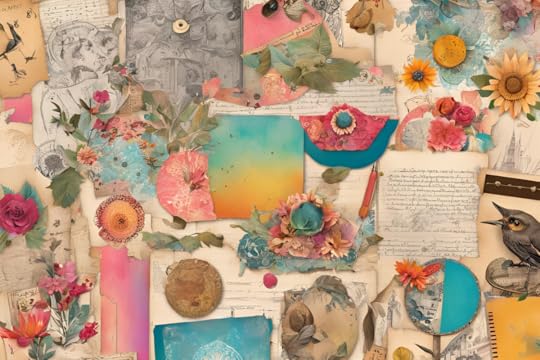 Essential Supplies for Junk JournalingBasic Tools and Materials
Essential Supplies for Junk JournalingBasic Tools and Materials Getting started with junk journaling doesn’t require a lot of specialized supplies. In fact, one of the joys of junk journaling is the ability to use what you already have on hand. However, there are a few basic tools and materials that can be helpful to have:
Journal Base: This can be an old book, a notebook, or even a handmade journal created from folded and stitched paper. The base serves as the foundation for your junk journal.Adhesives: Glue sticks, double-sided tape, and Mod Podge are commonly used to attach materials to the pages.Scissors and Craft Knife: These are essential for cutting and trimming materials.Writing Tools: Pens, pencils, markers, and colored pencils are useful for adding written content and embellishments.Ruler and Bone Folder: These tools help with measuring and creating clean folds and creases.Repurposing Everyday ItemsOne of the hallmarks of junk journaling is the use of repurposed and found materials. Almost anything can be incorporated into a junk journal, making it a highly versatile and creative practice. Some common items to consider include:
Old Books and Magazines: Pages from old books, magazines, and catalogs can be used for backgrounds, collages, and ephemera.Fabric Scraps: Fabric pieces can add texture and color to your journal pages.Packaging Materials: Wrapping paper, tissue paper, and cardboard can be repurposed for journaling.Ephemera: Ticket stubs, postcards, receipts, and other small items collected from daily life can add a personal touch to your journal.Optional Embellishments and DecorationsWhile not necessary, embellishments and decorations can add an extra layer of creativity and personality to your junk journal. Some popular options include:
Stickers and Washi Tape: These can be used to add decorative elements and borders to your pages.Stamps and Ink Pads: Stamps can be used to create patterns, images, and text.Ribbons and Lace: These can be used to create tabs, bookmarks, and decorative accents.Beads and Buttons: These can be sewn or glued onto pages for added texture and interest.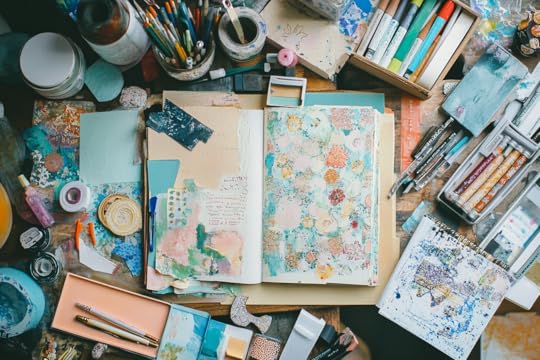 How to Start Your First Junk Journal
How to Start Your First Junk JournalChoosing a Theme or Concept
Before you start creating your junk journal, it can be helpful to choose a theme or concept. This will give your journal a sense of cohesion and direction. Some popular themes include:
Travel Journals: Document your travels with maps, ticket stubs, postcards, and photographs.Memory Keepsakes: Create a journal that captures the essence of a special event, such as a wedding, birthday, or anniversary.Seasonal and Holiday Themes: Create journals that reflect the changing seasons or celebrate holidays and special occasions.Daily Life: Use your junk journal to document your everyday experiences, thoughts, and reflections.Creating a Layout and StructureOnce you have a theme in mind, you can start thinking about the layout and structure of your journal. Consider how you want to organize your pages and what elements you want to include. Some common layout ideas include:
Chronological Order: Arrange your pages in the order that events occurred.Thematic Sections: Divide your journal into sections based on different themes or topics.Interactive Elements: Incorporate pockets, flaps, and fold-out pages to add an interactive dimension to your journal.Incorporating Found and Repurposed MaterialsAs you start creating your journal, don’t be afraid to experiment with different materials and techniques. The beauty of junk journaling lies in its unpredictability and creativity. Here are some tips for incorporating found and repurposed materials:
Layering: Layer different materials, such as fabric, paper, and ephemera, to create depth and texture.Collage: Create collages by cutting and arranging images, text, and patterns from magazines, books, and other sources.Handwriting and Typography: Add handwritten notes, quotes, and journal entries to personalize your pages.Interactive Elements: Create pockets, envelopes, and fold-out pages to hold additional items and add an interactive element to your journal. Tips and Techniques for Junk Journaling
Tips and Techniques for Junk JournalingLayering and Collage Techniques
Layering and collage are fundamental techniques in junk journaling. They allow you to create visually interesting and textured pages. Here are some tips for mastering these techniques:
Start with a Base Layer: Begin by creating a base layer using a piece of paper, fabric, or other material. This will serve as the background for your page.Add Layers: Layer different materials on top of the base, such as magazine clippings, fabric scraps, and ephemera. Experiment with different textures and colors.Use Adhesives: Use glue sticks, double-sided tape, or Mod Podge to attach your layers. Be mindful of how much adhesive you use to avoid wrinkling or bubbling.Experiment with Placement: Don’t be afraid to experiment with the placement of your materials. Move them around until you find a composition that you like.Handwriting and TypographyHandwriting and typography play a crucial role in junk journaling, adding a personal and artistic touch to your pages. Here are some tips for incorporating these elements:
Choose the Right Tools: Use pens, markers, and pencils that you feel comfortable with. Experiment with different styles and thicknesses to find what works best for you.Practice Your Handwriting: If you’re not confident in your handwriting, take some time to practice. You can also use stencils or stamps to add text to your pages.Mix and Match Fonts: Combine different fonts and styles to create visual interest. For example, you can use a bold font for headings and a more delicate font for body text.Add Quotes and Journal Entries: Incorporate quotes, journal entries, and other written content to add meaning and context to your pages.Adding Interactive ElementsInteractive elements can add an extra layer of creativity and engagement to your junk journal. Here are some ideas for incorporating these elements:
Pockets and Envelopes: Create pockets and envelopes to hold additional items, such as photographs, notes, and ephemera. You can make these from paper, fabric, or other materials.Fold-Out Pages: Add fold-out pages to create hidden sections or to expand the space for your content.Tabs and Bookmarks: Use ribbons, lace, and other materials to create tabs and bookmarks that make it easy to navigate your journal.Pop-Ups and 3D Elements: Experiment with pop-ups and 3D elements to add a sense of depth and dimension to your pages.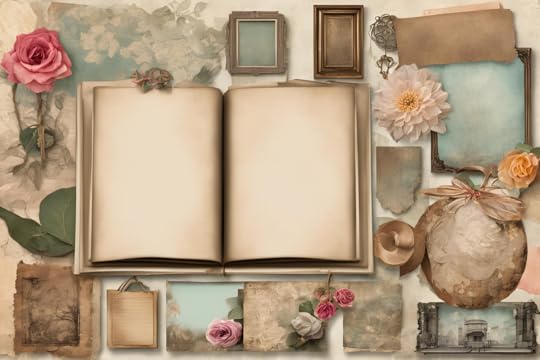 Inspirational Ideas for Junk Journaling
Inspirational Ideas for Junk JournalingTravel Journals
Travel journals are a popular theme for junk journaling. They allow you to document your adventures and preserve memories from your trips. Here are some ideas for creating a travel journal:
Maps and Itineraries: Include maps, itineraries, and travel guides to provide context for your journey.Ticket Stubs and Ephemera: Collect ticket stubs, boarding passes, and other ephemeras from your travels to add to your journal.Photographs and Sketches: Include photographs and sketches of the places you visit, as well as any memorable experiences.Reflections and Journal Entries: Write about your experiences, thoughts, and reflections as you travel. This will add a personal and emotional dimension to your journal.Memory KeepsakesMemory keepsakes are another popular theme for junk journaling. They allow you to capture and preserve memories from special events and moments in your life. Here are some ideas for creating a memory keepsake journal:
Photographs and Mementos: Include photographs, mementos, and other items that remind you of the event.Written Reflections: Write about your thoughts, feelings, and memories from the event. This will add a personal and emotional dimension to your journal.Ephemera and Decorations: Use ephemera, such as invitations, programs, and decorations, to add context and visual interest to your pages.Interactive Elements: Create interactive elements, such as pockets and fold-out pages, to hold additional items and add an interactive dimension to your journal.Seasonal and Holiday ThemesSeasonal and holiday-themed junk journals are a great way to celebrate and document the changing seasons and special occasions. Here are some ideas for creating a seasonal or holiday-themed journal:
Seasonal Decorations: Use seasonal decorations, such as leaves, flowers, and ornaments, to add a festive touch to your journal.Holiday Ephemera: Collect holiday ephemera, such as greeting cards, wrapping paper, and tags, to incorporate into your journal.Seasonal Reflections: Write about your thoughts, feelings, and memories from the season or holiday. This will add a personal and emotional dimension to your journal.Interactive Elements: Create interactive elements, such as pockets and fold-out pages, to hold additional items and add an interactive dimension to your journal. The Joy of Junk Journaling
The Joy of Junk Journaling Junk journaling is a deeply rewarding and fulfilling practice that offers a unique way to document memories, express creativity, and repurpose everyday materials. It allows you to create something beautiful and meaningful from the ordinary, turning the mundane into the extraordinary. Whether you’re a seasoned crafter or a complete beginner, junk journaling offers endless possibilities for creativity and self-expression.
Start Your Own Junk Journal Today!If you’re intrigued by the idea of junk journaling, there’s no better time to start than now. Gather your materials, choose a theme, and let your creativity flow. Remember, there are no rules in junk journaling — only your imagination and the joy of creating something uniquely yours. So, dive in, experiment, and enjoy the process of bringing your junk journal to life.
The post Junk Journaling: A Powerful & Creative Way to Record Your Life first appeared on The Painted Kat.
January 12, 2025
Explore a Vibrant Lifetime of Creativity
Hello and welcome to The Painted Kat! I’m Kat Sanders, and I’m so excited to share this creative space with you. Whether you stumbled across my site while searching for creativity, inspiration, or a bit of whimsy, I’m thrilled that you’re here.
 Why I Started The Painted Kat
Why I Started The Painted KatArt has always been a huge part of my life. I’ve explored many creative outlets over the years, from doodling in notebooks to crafting junk journals, painting vivid scenes, and even diving into digital art. Creativity is my happy place, and I wanted to build a space where I could share that joy with others.
The Painted Kat is my little corner of the internet to bring together everything I love—art, imagination, and connection. Here, you’ll find a mix of handmade creations, tutorials, and resources, including innovative digital designs that blend technology and creativity, all designed to inspire your own creative journey. My hope is that you’ll leave every visit feeling inspired and ready to create something amazing.
 What You Can Expect On This Journey of Creativity
What You Can Expect On This Journey of CreativityHere are some of the things I’m passionate about and plan to share with you:
Junk Journaling and Papercrafts: Discover unique techniques and resources to make your journals truly special. Painting : From traditional to digital, I’ll explore how patterns, shapes, and symbols can tell stories and evoke emotion.Miniatures and Dollhouses: Step into tiny worlds where art meets storytelling. Legos : Build and imagine with endless creativity, where play and design come together. Digital Downloads : Get access to printables, wallpapers, and other resources to fuel your projects. Creative Inspiration : Stories, tips, and ideas to spark your imagination. A Bit About Me
A Bit About MeWhen I’m not creating, I’m diving into fantasy novels, exploring historical and steampunk styles, or spending time with my grandchildren. I also love playing cozy video games and experimenting with Legos—yes, even when the kids aren’t around! My inspirations come from nature, mythology, and the intricate patterns and symbols that make the world so fascinating.
Let’s Explore Our Creativity TogetherThe Painted Kat is more than just a website—it’s a community. I believe art is for everyone, and I want to encourage you to explore, experiment, and find your own creative voice. Whether you’re a seasoned artist or just starting your creative journey, there’s something magical here for you.
Thank you for stopping by and being a part of this adventure. I’m looking forward to sharing my creations, tips, and ideas with you. Let’s make something amazing together!
The post Explore a Vibrant Lifetime of Creativity first appeared on The Painted Kat.
July 29, 2024
Hello world!
Welcome to WordPress. This is your first post. Edit or delete it, then start writing!
The post Hello world! first appeared on The Painted Kat.
June 23, 2021
LGBTQIA Plus Moons – 15 Digital Paintings
This month is Pride Month, and I have been working on a series of digital painting depicting some LGBTQIA Plus Moons with a space background. I’ve identified as part of the Alphabet Mafia since I was 19, 28 years ago. As an artist, I create art that resonates with me and with who I am. This includes my sexual orientation and gender identity.
LGBTQIA Plus Moons Gallery The post LGBTQIA Plus Moons – 15 Digital Paintings first appeared on The Painted Kat.July 3, 2020
Inanta – World Building for World Anvil’s Summer Camp 2020
World Anvil is running a world building summer camp this month, and I’m taking part.
During Worldbuilding Summer Camp, we challenge you with 33 prompts to get you motivated, inspired, and ready to worldbuild! Take part, grow your world, and win prizes!
World Anvil
It’s day 3 and I’ve already submitted my first six of the ten prompts that are available. I’m working on the rest. They are available here:
I have also been making some art for my articles. I used a full moon I made earlier in the year for Alqamar:
 Alqamar – Inanta’s First Moon
Alqamar – Inanta’s First MoonThen I made two fresh pieces of art for Compass of Mar and the Trident of Sila.
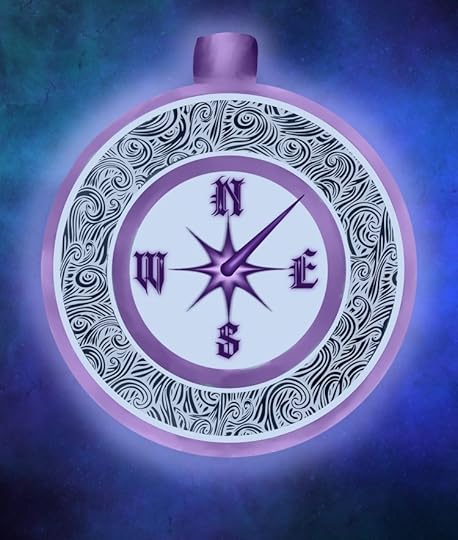 Compass of Mar
Compass of MarBy Kat Sanders
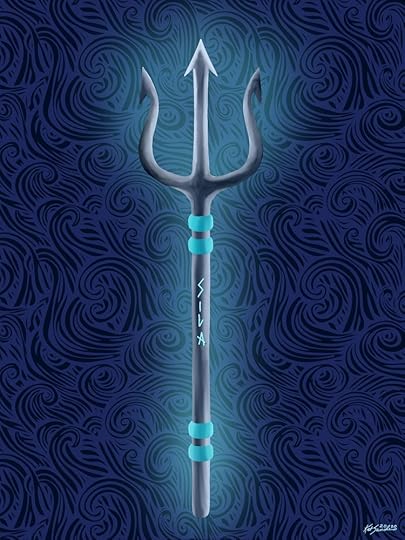 Trident of Sila
Trident of SilaBy Kat Sanders
I’m pulling pictures from Unsplash for the rest of my articles as appropriate. I’m hoping to get all 10 available prompts finished by the end of the weekend.
Check them out and let me know what you think!!!
June 17, 2020
It’s Been Years…
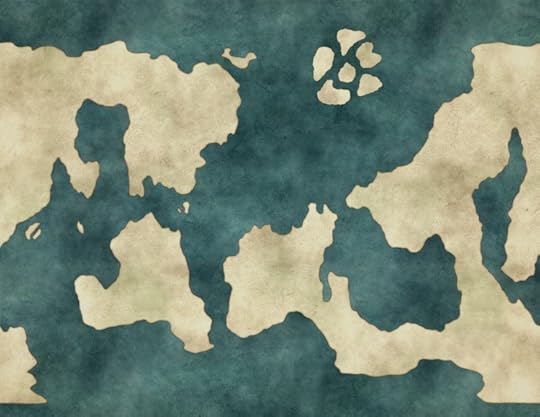 Inanta – Our Adventuring World
Inanta – Our Adventuring WorldIt’s been a decade or more since I’ve played Dungeons and Dragons. My best friend, godson, his girlfriend, another friend, and I have are playing again. I’m the Dungeon Master, which is because I like to be in control and have to know everything that is going on. Plus, my godson’s girlfriend and our other friend are new to the game.
This being the case, I have created a world for us to play in. It’s called Inanta. I am creating maps, races, deities, non-player characters, and adventures. It’s my world to populate and my friends will find adventures in Inanta. I will flesh out the world over on World Anvil and if you would like to know more about our campaigns, please visit Inanta.
 Daire Ada – the first area we will explore
Daire Ada – the first area we will exploreDaire Ada is the first area we will explore in our campaign. The map above is blank so as not to give away any secrets on what is coming up for our adventurers. As our adventurers explore each area, I will reveal each section of the map. I will give them hints and clues along the way to decide about where they will need to go next.
My best friend is playing a halfling named Azure Tealeaf. She is a sorceress with a Dragonborn ancestor. This plays a vital role in the current adventure, as the previous owner of the middle island, Sakiya, was Jheri Myastan, Elesa Dragon, was Azure’s great grandfather.
Sakiya Island had been home to Jheri Myastan for thousands of years. It is where he protected his various collections. He put up a ward around Sakiya to keep everyone away from his island, but now that he is dead the ward is failing.
The adventure is two-fold.
First, there is more than one heir to the island. Azure and her fellow adventurers will need to be the first to the castle on the top of the mountain in the middle of Sakiya. There, Azure will have to conduct a ritual to gain control of and power the wards.
Second, pirates fill the islands around Sakiya. These islands are also barren deserts, while Sakiya is a lush paradise. If the wards fall before Azure completes the ritual, the pirates will overrun Sakiya.
 Morea – first starting location
Morea – first starting locationOur adventure starts here on Morea, one of the pirate islands. Our party will start in the western port town of Alverton. There, they will have to decide if they will decide if they will make their way to the northern (Seameet) or eastern (Burnsley) ports. Which port, they decide on, will put them closer to one of two different docks on Sakiya. There are also two cities on this island. One they will have to pass through (Mordisi) and another they will only pass through if they take the northern route (Savos).
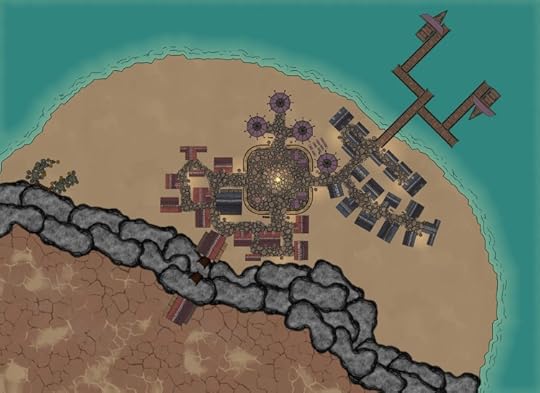 Port of Seameet
Port of Seameet Port of Burnsley
Port of Burnsley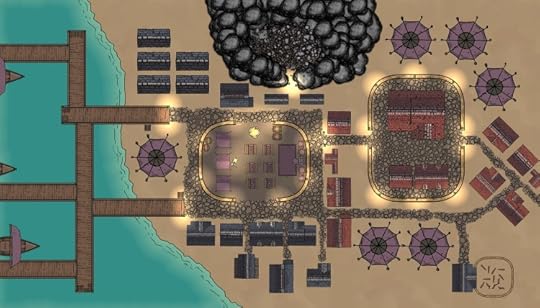 Port of AlvertonMorea’s Ports
Port of AlvertonMorea’s PortsI have a lot more to work out for the first part of our adventure. I will start logging in what we get up to and how the adventure goes. I’m hoping to keep track of all my successes and failures as I go along. It’s been over a decade since I’ve done this, so I’m not sure how well this will go…
April 24, 2020
Update: What I Have Been Up To In The Last Forever!!
Wow! I haven’t written a blog post for my website in ages. I’m been busy writing in my journal and world building for two different worlds that I’m planning to write fictions in. I have also been keeping a sporadic art journal and making maps for my worlds.
Personal Life
 Just some of the boxes I’ve packed these last couple of months.
Just some of the boxes I’ve packed these last couple of months.This is our donation pile. Photo by Kat Sanders
In my personal life, my roommate and I put down the deposit on a new apartment the day before the quarantine started. We have been packing and planning the move during the shutdown. Luckily, I am considered an essential employee for my day job, so I’m still getting normal paychecks.
It sucks walking into an empty office as I’m one of three employees that still has to show up. Sometimes, it’s way too quiet for me and the thoughts in my head get too loud. Those days, it’s more important than ever that I spend time with my roommate and call my family and friends.
In the middle of this quarantine and moving apartments, my desktop died. It’s now one more thing that is going on my ‘To Do’ list to deal with after we move. I have to wait and see how much money we will have left over to see if I can afford a new computer. We are already planning on buying a new couch as the one we have is old. A new computer might not be in the budget. For now, I’m using my roommates’ laptop. I’m thankful that she is such a sweetheart and will let me use it.
World Building
 Shakllar is the world I created for my gay supernatural romance that I’m writing…
Shakllar is the world I created for my gay supernatural romance that I’m writing…Created in Wonderdraft by Kat Sanders
I have spent most of the last year or so working on world building. I was getting so involved that my desk looked like it exploded little bits of paper from all the notes I was taking. I was getting more and more confused by which notes went with which world. It was becoming a huge problem, as I was mixing up my two worlds. I needed to find a solution.
I found World Anvil. It’s amazing and while it has paid accounts, you can start out with the free version. I did, though I quickly paid for a year. I have spent the last few weeks entering information into World Anvil and clearing my desk of all those little pieces of paper. Though, I’m not done yet. It’s not only helping me get my notes organized, but it is showing me where my worlds are deficient, like politics and economics.
If you would like to check out what I have so far on my world, check out these links:
ShakllarHall of Doors
BUT I’m warning you, there isn’t much to look at yet. I’m still in the organization stage. There is a lot of pages with names at the top that I still need to enter their information. When I come across a topic, I know I need to write about in my world, that if I make an article for it in World Anvil, then it becomes a reminder that I need to address that issue. Slowly, I am adding my notes, stories, and fleshing out my worlds. I excited to see all the information I’ll have for my story bible once I have transcribed everything.
Cartography
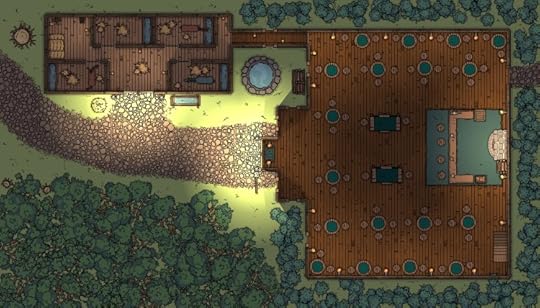 Barking Spider Inn & Tavern – Ground Floor – Created by Kat Sanders
Barking Spider Inn & Tavern – Ground Floor – Created by Kat SandersThe other fun hobby-diversion-interest-sideline that I’ve taken up which works well with my world building is cartography. I have been drawing maps, mostly free hand, for the last 20-plus years. They haven’t been great maps, but they have been enough for me to get a picture of where my characters are from and where they are going.
Plus, I’ve drawn a map or two or twenty for D&D games that I have DMed. Now, I want something that looks a little nicer than what I can draw by hand, even if my drawing skills are a million times better than they were 20 years ago.
I found two cool programs to help me out:
WonderdraftDungeondraft
If you look at the comparison above, you can see that even with the Wonderdraft version of Mytilias that is unfinished, it already looks a million times better. I need to add all the objects like cities, mountains, and trees. Then, I’m planning to make city maps for all the important cities in my stories. I may make city maps for other cities too, but that will happen as time permits.
Mytilias is one world in the Hall of Doors. I will need to make at least five more world maps besides Mytilias for my first story. I have seven characters in the quest group that make up my “good characters”. My main character has been living on Earth for the last 40+ years before she is transported to the Hall of Doors. Two other of my other characters are twins, so they are from the same world (Mytilias). The other four characters are from different worlds, so I’m planning to draw them (Kamen, Arborizar, Takobi, Nathrach-de). Then, the bad guy is from his own world (Eerste), and I want to draw that one too.
Besides mapping worlds, I want to use Dungeondraft to map buildings, cave, dungeons, cities and other useful areas that I’ll need to picture for my stories. Whether with Shakllar or Hall of Doors, the better I can picture where people and creatures are in my stories, the better I can show what is happening. I’ll be able to be see and understand what is happening.
Between World Anvil, Wonderdraft, & Dungeondraft, I have been able to really dig deep into my worlds and flesh them out more than I have in the past. Plus, BONUS, my organization has soared.
Here is the gallery of maps I have made with Wonderdraft and Dungeondraft. There are only a couple so far, but I’ll keep adding to it as I finish maps.
Let me know how you are keeping busy during quarantine in the comments below!
May 28, 2019
What Will You Regret?

If you live to 100 years old, how many years do you have
left? What will you regret the most when you are lying on your death bed?
I’m 45. I have 55 years left. I have spent the past year
answering that question for myself. My answer surprised me the first time I
articulated it. It wasn’t spending more time with family which you would think
would be the most common answer. It wasn’t making more money, which was what I
thought my answer would be. I’m mercenary.
No, my answer was to stop drifting through life and do something
worthwhile. I have come up with a motto that gives me purpose for my life. The
motto, Dream! Create! Inspire!, gives my life direction and I can use that to
orient myself whenever I feel like I’m drifting instead of staying the course.
My best friend and I were talking about how she feels about her
life. She says that she wakes up every morning and feels like she must justify
her existence. That she doesn’t deserve to be alive. Her life has been filled
with trauma and pain. She has been taught that she is unworthy, and her life is
not worth as much as the next person. She believes that no matter what she does
that she will offend or upset everyone she encounters. She is wrong.
She is a beautiful, intelligent, courageous human being and I
love her dearly. I wish she would believe me when I tell her that, but she
doesn’t. She has fought so hard all her life and I wish she knew how much I
admired her for everything she has made it through. I have told her, but she
still doesn’t believe. She turns 50 this year and has 50 years to go in my
scenario above. She has so much she could give to the world, but she is afraid
that she will upset someone, someone she has never even met. I’ll keep
encouraging her and maybe one day, she’ll step up.
What about you?
How many years do you have left?
What do you have to give to the world?
What is the purpose for your life?
Some people know. They find their purpose early and never
deviate. Some people struggle with finding their purpose. Some people find
their purpose and then get lost and then find it again.
I found mine by sitting down with pen and paper. I made a list of
all the things, big and small that I wanted to do with my life. These things
included vacations I wanted to take, skills I wanted to learn, art I wanted to
create, novels I wanted to write, and spending time with family and friends. I
ended up with a list of about 50-60 items, which included being a billionaire.
I still have my mercenary side.
Then I grouped them together in categories. I ended up with a
business category, an art category, a writing category, a giving back category,
a travel category, a money category, plus a few others.
Then I took those categories and really looked at them and their
underlying meanings. The art, writing and travel categories are all about
things I dream about doing. The business, art and writing categories are about
creating. The giving back category is about inspiring others. The money
category ended up being about having the money to support the other categories
rather than just having money for money’s sakes. I was able to put each of the
categories on my list into one of the four categories: Dream! Create! Inspire!
or Support. That is how I ended up with my motto:
DREAM! CREATE! INSPIRE! BE EPIC!
You can do this too.
Write down what is important to you – all the things, small and
big. If it is a sports team or TV show, write it down. If it is your family,
write it down. If you want to own a house or pay off the house you are
currently buying, write it down. If you love 80’s hair bands, write it down. It
doesn’t matter what it is, write it down.
Now, what categories can you group them in? These categories are
your own. You get to decide what they are. If you have 10 TV shows on your
list, then you might want a category called TV. That would be a big part of
your life. If you like to read a lot of books, like my best friend who has over
5,000 books on her Nook and has read at least 3/4 of them, you might need a
category called Reading or Books. These are your categories.
Do you have your categories? Yes, then what do your categories
have in common? What do you want to do with them? Let’s take the TV &
Reading categories. If we group them together, they could be a Relax! or if you
want to do something with them and you like to write, why not write reviews on
the books you read and the TV episodes you watch, then you might call this part
of your motto, Recommendations! Whatever you decide is up to you, your motto is
supposed to help you when you are struggling to maintain your day to day
progress towards your goals.
Once you have a motto, decide on some Life Goals. I have two big
ones. My personal life goal is to Travel. I want to leave my little apartment
and travel the US and then the world. My Dream! Create! Inspire! Life Goal is
to inspire 1,000,000 souls through my blog, The Painted Kat, my Medium
articles, my artwork, and anything else I dream and create. I’m just getting
started. I have 55 years to work on this goal.
How many years do you have?
How many lives can you touch?










